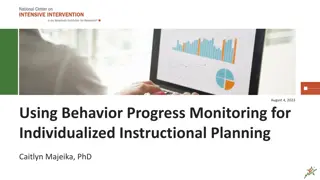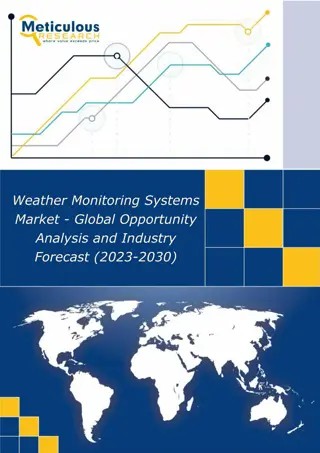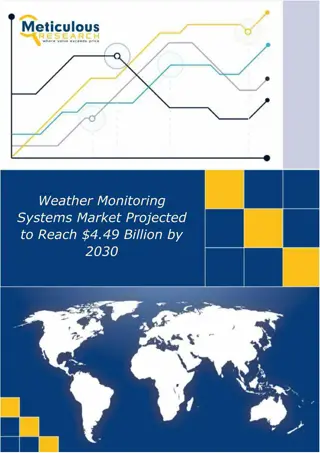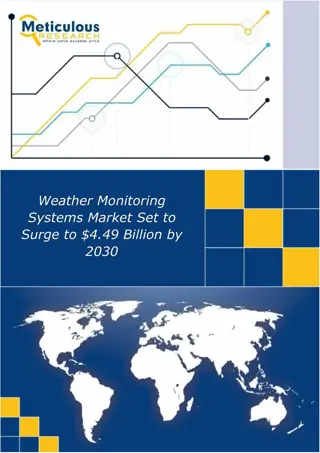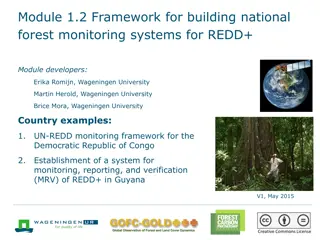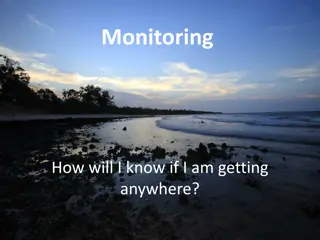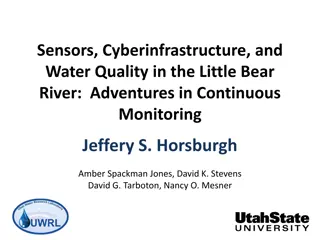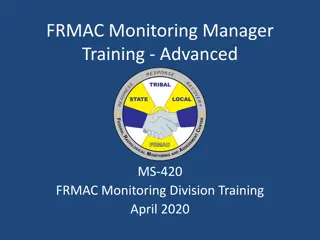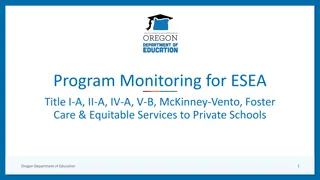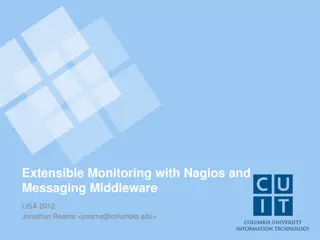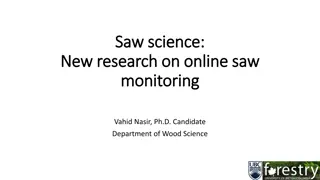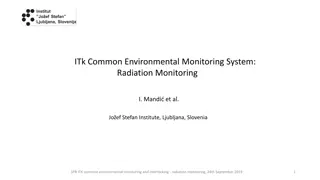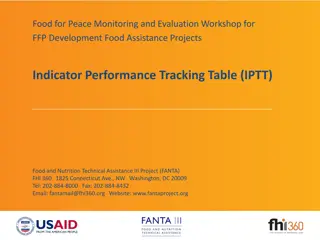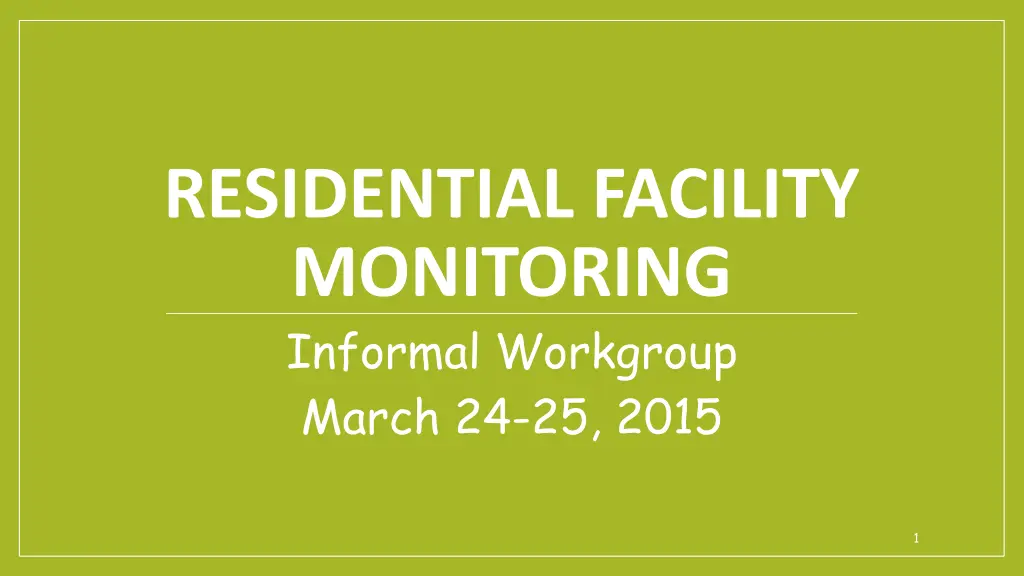
RF Monitoring System Review
"Join the Residential Facility Monitoring Informal Workgroup on March 24-25, 2015, to review the RF monitoring system and ensure it meets the needs of students with disabilities. Gain insights, provide recommendations, and understand the system's purpose, history, and litigation. Explore roles and responsibilities, and walk through a year in RF monitoring. Stay updated on TEA's post-TAA activities and the ongoing monitoring process for RF Tracker and Special Education. Engage in training sessions and revisions for continuous improvement."
Download Presentation

Please find below an Image/Link to download the presentation.
The content on the website is provided AS IS for your information and personal use only. It may not be sold, licensed, or shared on other websites without obtaining consent from the author. If you encounter any issues during the download, it is possible that the publisher has removed the file from their server.
You are allowed to download the files provided on this website for personal or commercial use, subject to the condition that they are used lawfully. All files are the property of their respective owners.
The content on the website is provided AS IS for your information and personal use only. It may not be sold, licensed, or shared on other websites without obtaining consent from the author.
E N D
Presentation Transcript
RESIDENTIAL FACILITY MONITORING Informal Workgroup March 24-25, 2015 1
Purpose Review information related to the RF monitoring system Ensure that the agency meets its ongoing obligation to have a monitoring system that addresses the unique circumstances of students with disabilities residing in residential facilities Advise the agency on revisions for improvements to the RF monitoring system 2
Results Participants will gain an understanding of the purpose, history and litigation of the RF monitoring system. Participants will provide recommendations on revisions to the RF monitoring system. 3
Roles and Responsibilities Texas Education Agency Staff Stakeholder Member Serve as a stakeholder member of the group Represent an identified perspective to the group Participate in discussion and provide feedback related to review of information, effectiveness of proposed activities and recommendations for the future Follow meeting guidelines Serve as resource to the stakeholders Follow meeting guidelines Facilitate the process 4
TUESDAY March 24, 2015 5
TEA April Post TAA letter to website informing district of the end of year collection for RF Tracker Special Education Monitoring TETN will review end of year collection requirements for RFT with districts and ESCs Continued on-site visits and desk reviews that include RF Continue on-site visits and desk reviews that include RFM Staff available for questions and concerns about RFM and RFT Continue on-site visits and desk reviews that include RFM Staff available for questions and concerns about RFM and RFT After RFT closes at midnight of June 5, TEA staff review each district in RFT to determine if end of year data has been completed Contact districts who have not completed RFT; Reopen RFT for those district needed to complete data entry Continue monitoring the completion of RFT until all districts have finished Beginning running reports to determine staging Make any revision, if needed, to intervention documents or guidance documents May June July August Train ESC staff on changes or revision to RFM Continue working on staging/selection 7
September Complete staging process with development of individual district s rubric for staging SPED Monitoring TETN reviews beginning of 2015-2016 RFM and data collection for RFT Staging is posted in ISAM Staff available for questions concerning RFM and RFT On-site visits and reviews of improvement plans that include RFM begin Staff available for questions concerning RFM and RFT October November December On-site visits and reviews of improvement plans that include RFM begin Staff available for questions concerning RFM and RFT January On-site visits and reviews of improvement plans that include RFM begin Staff available for questions concerning RFM and RFT February On-site visits and reviews of improvement plans that include RFM begin Staff available for questions concerning RFM and RFT 8 March On-site visits and reviews of improvement plans that include RFM begin Staff available for questions concerning RFM and RFT
A Districts Yearly Walk Through RF Monitoring 9
Staging Process Students who reside in the RF for less than 30 days are not counting in calculation District with less than 6 students who contribute to the calculations are not staged. **************** For 2014-2015 Staging Calculations are obtained from RF Tracker on 3 indicators used % of students in settings of 01, 02, 30, 43, 44, 84, 85, 94, 95, 96 % of RF students receiving a full school day % of RF students receiving less than half school day Categorized district: 1= All facilities served by the district met the definition/students prevented from leaving 2= None of facilities served by district met the definition/students NOT prevented from leaving 3=Had both types of facilities 10
Districts who only had RFs that prevented students from leaving were put into a pool for cyclical monitoring. 12
Conversion of RFT Calculations to Value Points For indicators A and C For indicator B 99-100% = 0 points greater than 89, but less than 99 = 1 greater than 79, but less than 89 = 2 greater than 69, but less than 79 = 3 greater than 59, but less than 69 = 4 greater than 49, but less than 59 = 5 greater than 39, but less than 49 = 6 greater than 29, but less than 39 = 7 greater than 19, but less than 29 = 8 greater than 9, but less than 19 = 9 less than 9 = 10 99-100% = 10 points greater than 89, but less than 99 = 9 greater than 79, but less than 89 = 8 greater than 69, but less than 79 = 7 greater than 59, but less than 69 = 6 greater than 49, but less than 59 = 5 greater than 39, but less than 49 = 4 greater than 29, but less than 39 = 3 greater than 19, but less than 29 = 2 greater than 9, but less than 19 = 1 less than 9 = 0 14
to Effectively Measure The Characteristics of an Appropriate Education for Students with Disabilities Residing in RFs? Types of Facilities Indicators Selection Criteria Data System Interventions 19
How Do We Build a Monitoring System To effectively measure the characteristics of students with disabilities residing in RFs? Types of Facilities Data Systems 20
to effectively measure the characteristics of an appropriate education for students with disabilities residing in RFs? Data Systems PEIMS vs RF Tracker 21
RF Tracker Through the consent decree, TEA was tasked with developing a separate data collection system for RF students to be completed by January 31, 2006. The data collection system was used to : Identify all school districts, including charter schools, serving RF students; Identify all RF districts in which any RF students were educated at the RF facility; Identify all RF district in which any RF students were educated in school district settings with only other RF students; and Categorize all RF districts by size of RF population (small= less than 30 RF students; medium= 31-80 RF students; large= more than 80 RF students). Was used in the selection process for RF districts to receive on-site visits 22
RF Tracker The consent decree included indicators and sub- indicators that would be used to measure a district s performance. The indicators were: Least restrictive environment Commensurate school day ESY services Certified and qualified staff Rate of Participation in State Assessment (TAKS) Related Services 23
LRE % RF students in separate school settings (e.g., separate campus or RF setting) % RF students in hospital, homebound, and state school setting % RF students in self-contained classes # RF students moved to more restrictive settings during the school year # RF students moved to less restrictive settings during the school year Commensurate School Day # minutes in district s school day for non-disabled, full-time students # minutes in the school day for each RF student % and # RF students receiving a full school day % and # RF students receiving more than a half school day, but less than a full school day % and# RF students receiving less than half of the full school day 24
ESY Services % and # RF students receiving ESY services % and # RF students receiving more than 8 weeks of ESY services % and # RF students receiving between 6 and 8 weeks of ESY services % and # RF students receiving ESY services 4-5 days per week % and # RF students receiving ESY services 3 days per week % and # RF students receiving ESY services less than 3 days per week % and # RF students receiving ESY services more than 3 contact hours per day % and # RF students receiving ESY services less than 3 contact hours per day % and # RF students receiving ESY instruction and related services % and # RF students receiving ESY instruction only % and # RF students receiving ESY related services only % and # RF students receiving ESY services in separate school setting % and # RF students receiving ESY services in hospital, homebound, and state school settings % and # RF students receiving ESY services in self-contained classes 25
Certified and qualified staff # and % of teachers, paraprofessionals, and related services personnel providing instructional and/or related services to RF student either in local school district or at the RF, who are considered highly qualified, certified, and/or licensed in accordance with NCLB, IDEA, and applicable state licensing and certification requirements Participation in TAKS (This information was collected from PEIMS) % and # RF students taking TAKS compared to % and # of non-RF students receiving special education services taking TAKS % and # RF students by disability category taking TAKS compared to % and # of non-RF students receiving special education services taking TAKS 26
Related Services # RF students with orthopedic disabilities, other health impairments, or multiple disabilities # RF students receiving direct physical and/or occupational therapy services # minutes per day of direct physical and/or occupational therapy # RF students with speech/language disabilities # RF students receiving direct speech therapy # of minutes per week of direct speech therapy # RF students with emotional/behavioral disabilities, autism, and traumatic brain injury # RF students receiving direct social work services, psychological services, or school counseling services # of minutes per week of direct social work services, psychological services, or school counseling services Total # of students with orthopedic disabilities, other health impairments, or multiple disabilities compared to the number of full time equivalent physical therapists and number of FTE occupational therapists, whether employed or contracted Total # of students with speech/language disabilities compared to the number of FTE speech therapists, whether employed or contracted. 27
Implications of sub-indicators More information was collected in RF Tracker District Maintenance page included the number of FTEs for OTs, PTs, STs Information about certified/qualified teachers ESY information that included the type of services and the time Related services information concerning the amount of time for each DIRECT related service More of RF Tracker data used in calculations for selection of districts 28
Revisions to RF Tracker Calculations and Data As results of agreements with plaintiffs during the consent decree As results of what we saw during a visit vs what was reflected in RFT As a results of expiration of the consent decree with adopting rule TAC 97.1072 29
Things to Remember About RFT Collects some data that is not collected in any other agency system Facility where student resides Identifies facilities in each district and whether students are prevented from leaving or not Students who have surrogate parents Length of individual student s school day Does not require district to enter data into a system each time an element changes. Collects student data only at 2 times-- At the beginning of the year or when student enters the RF At the time student leaves the RF or as of date for end of year collection Information that affects selection for interventions is withdrawal/end of year data. 30
RF Tracker Retains each year s data so district can access past years of data, if needed Uses the student s social security number to access the student in PEIMS--- the most precise way to make sure the district has gotten the right John Smith . Social security number is now masked, with only the last 4 digits seen. Information collected throughout the 9 years of RFM implementation has been streamlined System produces reports of student data Access to data is immediate Selection for interventions for the year is dependent on student information that was collected the previous year. Can make changes more easily because we own the system 31
What would RF Monitoring look like if RF Tracker is not utilized? Would not have data on current students Would not be able to collect the data that no other agency system collects Selection for interventions would be based on data from 2 years past; Would not be able to track the movement of students from setting to setting and other changes for RF students Making changes to the system would be more difficult and a longer process--- the decision to make the changes could be rejected 32
Recommendation Needed: Should RF Tracker continue to be used to collect data concerning RF students and facilities? 33
Pros and Cons of PEIMS and RF Tracker 34
Activity---Is more data needed in RF Tracker? Choose a member of the group to be the scribe. In your group, discuss what changes are needed to RF Tracker if we continue to use it . Record recommendations on chart tablet Each group will report out. TEA may ask clarifying questions to understand exactly what is recommended. 35
If some or all of these changes can be incorporated into RF Tracker, should it be used to collect data for RF Monitoring? 36
Characteristics of an Appropriate Education for Students with Disabilities Residing in an RF Homework Assignment: Take the handout with you tonight. Read and study. Begin thinking about how effective special education programs demonstrate implementation of these characteristics? 37
WEDNESDAY March 25, 2015 39
What do we monitor routinely? Health---check blood pressure, temperature, have well checks, run tests, check weight, etc. Condition of your car---check tire pressure, change filters, run diagnostician tests, etc Finances---bank account, stocks, 401K/retirement plans, etc Concrete indicators that can be observe, provide evidence, measured, etc. 41
Weve determined the pieces or characteristics of an appropriate education for RF students. 42
Now how will we monitor these pieces to determine if students are receiving that appropriate education? What will those concrete indicators be? observable, measurable, provides evidence 43
How do we monitor these characteristics under the current system? 44
Group Activity Brainstorm what other ways we can monitor the implementation of these characteristics? Record recommendations on chart tablet. Each group will report out. TEA will ask clarifying questions, if needed. 45
to effectively measure the characteristics of an appropriate education for students with disabilities residing in RFs? Indicators Reviewed what indicators RFM currently uses; then brainstormed what other ways could used to determine if students receiving FAPE Data Systems Looked at RF Tracker and made recommendations on other information could be added Selection Criteria 46
Changes to Selection Criteria for 2014 Categorized districts by facilities: Only have facilities that prevent students from leaving Only have facilities that DO NOT prevent students from leaving Have both types of facilities For district that have only facilities that prevent students from leaving, the districts were moved to a cyclical monitoring system. Added values to RFT calculations because the desired % of students in a full day should be a large number while students served in more restrictive environment and % of students with less than school day should be small number Did not include RFT calculations for related services Removed the factors for having a new facility and continuing noncompliance 47
Districts who only had RFs that prevented students from leaving were put into a pool for cyclical monitoring. 49

